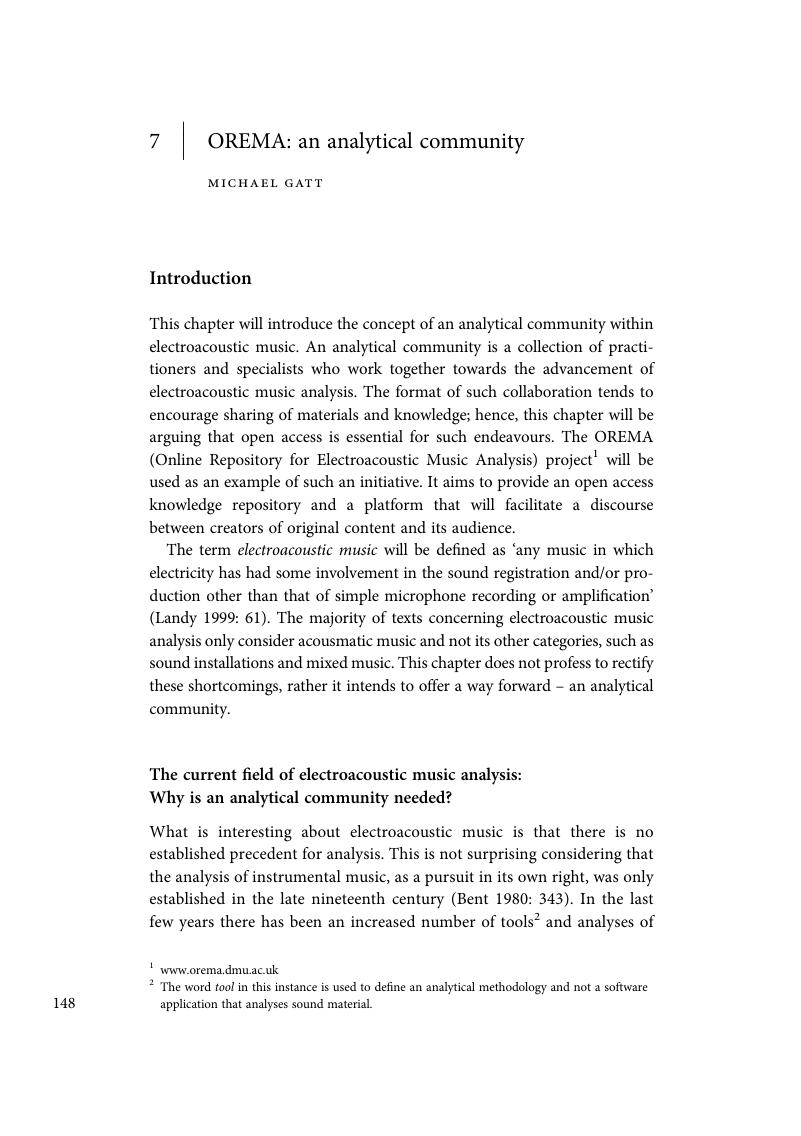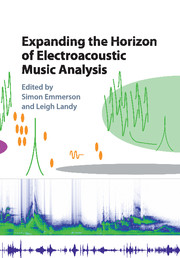Book contents
- Expanding the Horizon of Electroacoustic Music Analysis
- Expanding the Horizon of Electroacoustic Music Analysis
- Copyright page
- Contents
- Figures
- Contributors
- Part I Setting the scene
- Part II Ideas and challenges
- Part III Harnessing new forces
- 6 Exploiting computational paradigms for electroacoustic music analysis
- 7 OREMA: an analytical community
- 8 EAnalysis: developing a sound-based music analytical tool
- Part IV Analyses of key works
- Index
- References
7 - OREMA: an analytical community
from Part III - Harnessing new forces
Published online by Cambridge University Press: 05 April 2016
- Expanding the Horizon of Electroacoustic Music Analysis
- Expanding the Horizon of Electroacoustic Music Analysis
- Copyright page
- Contents
- Figures
- Contributors
- Part I Setting the scene
- Part II Ideas and challenges
- Part III Harnessing new forces
- 6 Exploiting computational paradigms for electroacoustic music analysis
- 7 OREMA: an analytical community
- 8 EAnalysis: developing a sound-based music analytical tool
- Part IV Analyses of key works
- Index
- References
Summary

- Type
- Chapter
- Information
- Expanding the Horizon of Electroacoustic Music Analysis , pp. 148 - 169Publisher: Cambridge University PressPrint publication year: 2016

